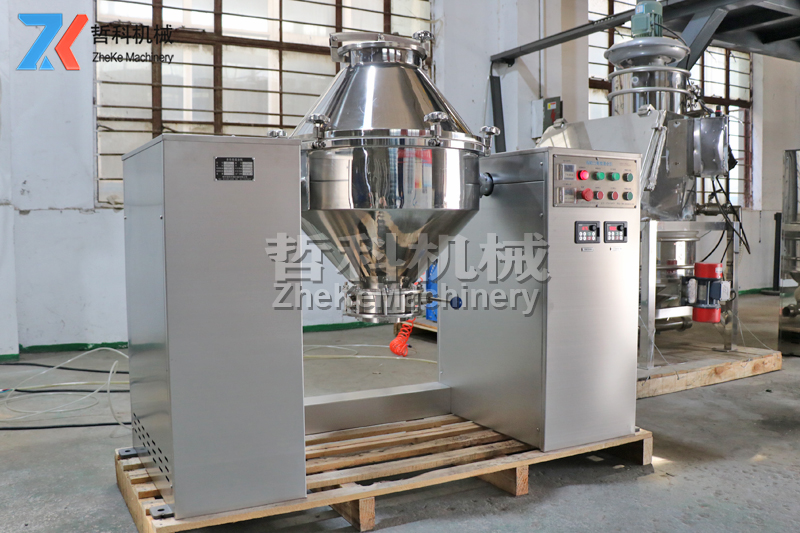




The main reasons for determining the performance of the three-dimensional mixer are as follows:
1, all the mixed powder required by the degree of mixing uniformity analysis, the concept is that the degree of mixing uniformity refers to the effect of external forces, various materials mixed with each other, so that in any volume of each component of the particles uniform distribution. For powder materials, mixing uniformity is that after mixing, small groups and small pieces can not be found, which is the macro mixing uniformity. The microcosmic mixing uniformity can be achieved through various sampling analysis. Normally, it is sufficient and comprehensive to analyze the mixing quality of each component of the powder. What is more necessary is that for the whole batch, it is necessary to carry out defective probability analysis and loss analysis of the batch products, and the uniformity of the mixed powder is determined by the type and uniformity of the three-dimensional mixer.
2, whether there is a dead Angle for powder materials, mixing without dead Angle is the standard for many mixing equipment with high uniformity. Because there is a mixing dead Angle, that is, in the mixing process, a small number of powder materials have been in the specific corner of the barrel during the mixing process or after mixing, and can not participate in the mixing of a phenomenon, so the proportion of the dead Angle is also an important indicator to measure the quality of the three-dimensional mixer.

3, the mixing time required for powder uniformity, in the performance evaluation of the three-dimensional mixer, the mixing time is also as important as the mixing uniformity, because the efficiency determines the output of the enterprise, but also determines the timeliness of mass production of the enterprise. Therefore, when we evaluate the performance of the three-dimensional mixer, the mixing speed, that is, the mixing time, is also very important, which involves the production efficiency of the enterprise.
4, the loading capacity of the three-dimensional mixer is the size of the loading rate, and it is also one of the reasons for determining its mixing performance. For example, the efficient Dzeke dual-power three-dimensional mixer has a large loading rate, up to more than 85%-90%, while the ordinary three-dimensional mixer is only about 45%, and the V-type mixer is only about 40%.
The above are the main reasons for determining the performance of 3D mixers through practical applications in various industries, and there are some other reasons, which are not to be explained here.